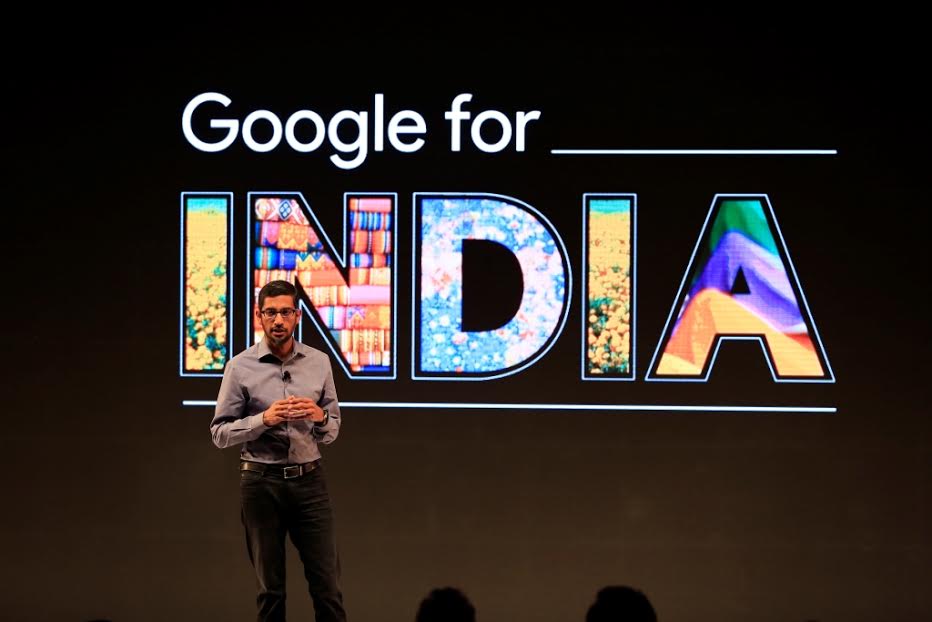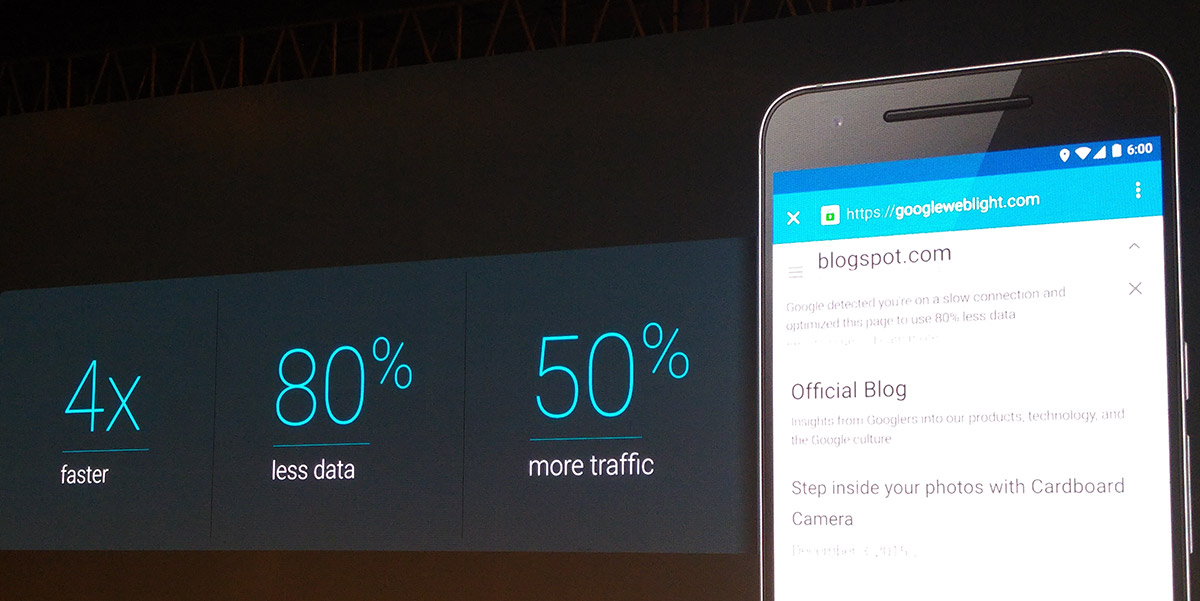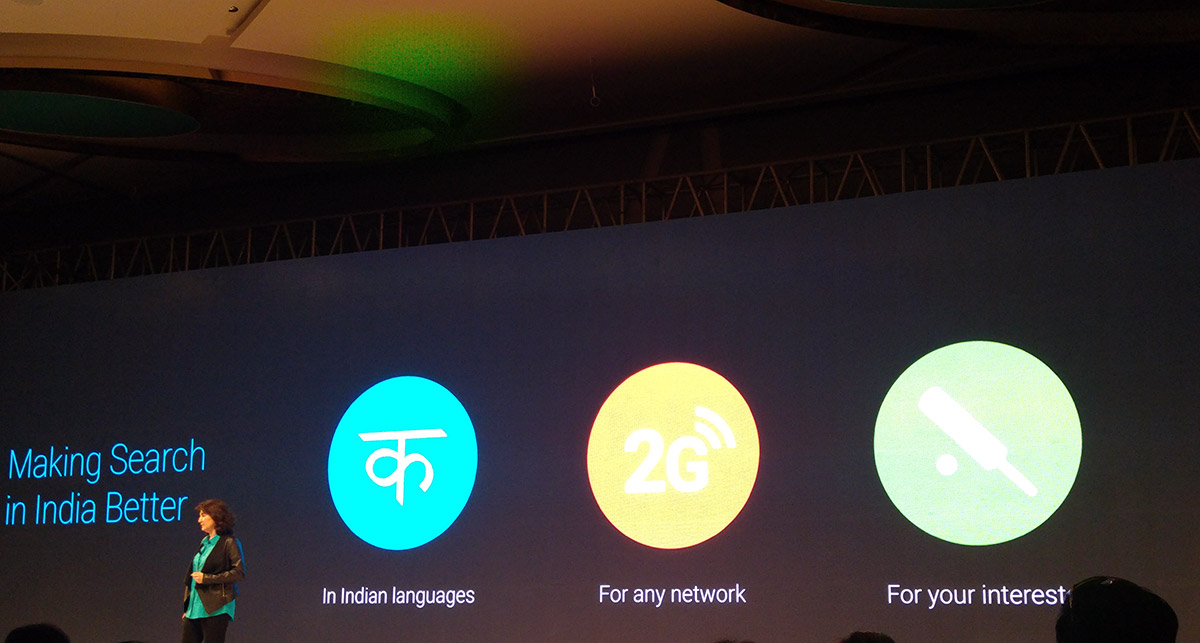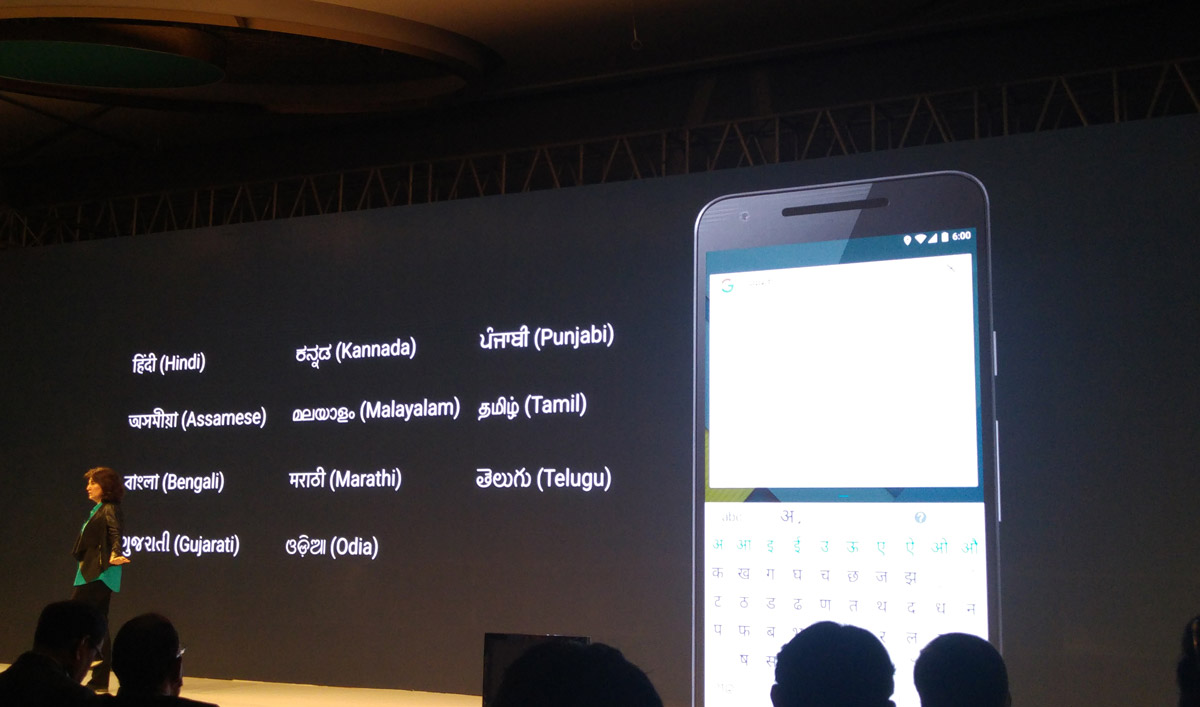
India is on the verge of an Internet revolution. Smartphones have helped internet and information penetrate far faster in India than anywhere else. Way back in 2013, Google searches on mobile overtook those on the desktop in India. With constantly evolving infrastructure and cheaper Android smartphones, we are going to see the next billion use the internet in a whole new way.
This is where Google's vision for India comes into play. The research, innovations, products and devices that are going to make it easier for people with slower connections, limited bandwidth and access, use the internet to their advantage, till infrastructure catches up.
Today at "Google For India" event, Sundar Pichai outlined the core strategy the company has for India. Starting with a way to connect the next billion, then make it easier for them to use the information they seek through regional language support, bandwidth optimizations and affordable devices to access the internet with and finally a way for them to give back, enriching the information source.
Pichai also talked about Google's rural internet initiative for women, where they are given bicycles to reach out to other women in nearby areas to teach them the benefits of using the internet. For this initiative, Google has partnered with Tata Trust in India. At present the pilot is being run in 1,000 villages but the company plans to make it a full-scale program to reach out to more than 300,000 villages in India.

Among other announcements Google is starting its project to increase internet adoption with free WiFi in partnership with Indian Railways and Rail Tel. RailWire WiFi will be free at railway stations in India starting with Mumbai Central, going online in January 2016 with 100 more to be added within next year.
Marian Croak, Vice-President of Access Strategy & Emerging Markets, added:
Railways are the backbone of Indian transportation and run through the heart of almost every city, town, and village uniting the country. These lines connect India, and working as partners, Google and RailTel will connect India along digital lines as well.

Project Loon, the company's ambitious project to use balloons as floating cell towers for internet coverage might come to India as well to connect remote rural areas where laying down fiber cables for broadband internet would not be feasible.

Google is also making its products work better for India keeping in mind the slower connections, and making internet more accessible. Search has already seen improvements over the year with Google Web Light which loads a lighter text only pages for slower websites. Search results have also been optimized to include more contextual information right within the search page with deep linking for installed apps (on Android.)

India has 22 recognized languages, but there are more than 150 different languages spoken throughout the country, Hindi being spoken by the majority. Now, most webpages, apps and literature online is in English which makes it fruitless for someone who doesn't understand it. To make it easier for such people, Google is bolstering its Android platform. With Marshmallow, Android now supports 15 Indian languages. You can even write in these languages with the Google Indic Keyboard (Download).

To make matters easier, Google also announced Tap to Translate, which would allow you to translate text from any app, just select the text you want to translate, a translate button would appear and you are all set. So there's no need to switch between apps when you want to translate some text. Real-time translation has also been added to Google Translate. Moreover, the company is getting the community involved with translations, as many as 1 million Hindi words have been added to make translations better.

Google has also added an offline feature to Maps, including turn-by-turn navigation when you get to an area without data coverage. You can pre-cache the map area and you would still be able to make searches and use all navigation tools in real time without a data connection. Map Maker, a gift from Google India has made it easier to map entire cities in India as well as the rest of the world with richer details about city roads, passageways and local businesses.

Earlier Google had also launched YouTube Offline, using which you could cache videos, when on a high-speed connection to watch later. Now the company also announced pause to buffer on YouTube, so you can just hit the pause button and the video would continue to buffer in the background on your mobile. This is expected to roll-out starting in a few weeks. There's more going forward, you will be able to download multiple videos offline at the same time and also schedule downloads.
To make all these technologies work, you need a foundation to build on. Chrome is now the most popular browser in the world, while Android is the OS of choice on smartphones for millions of users. Google plans to leverage this interest by training two million new Android developers over the next 3 years in partnership with 30 universities in India and National Skill Development Corporation.
Jason Titus - VP, Engineering of the Developers Product Group, said:
We’re already seeing incredible growth in the number of developers in India, and our forecasts indicate that this is growth is not going to slow down anytime soon. At Google, we’re committed to providing access to tools that empower developers to be successful.
Google also showcased the Asus Chromebit, which is quite literally a PC on a Stick running ChromeOS, all you need is a monitor, a keyboard and mouse to get started. Priced at Rs. 7,999 the Asus Chromebit will be available in January. Google also talked about Android One, its initiative to provide affordable quality smartphones running the latest version of Android with regular updates. The Android One project failed to gain steam in India, partly due to early online-only strategy - not understanding the target demographic and the choice of OEM partners.
Given the vast cultural heritage and diversity, India presents a unique challenge to Google, the solutions to which will help the company solve similar problems elsewhere. Google's long-term commitment to bring India online didn't start with today's event, we have been continuously seeing mobile-first improvements over the past year. But the pace at which smartphones have heralded the information age in India was unprecedented. With an expected 500 million users online by 2018, India is poised to have a say in what an open internet is going to be, free from any restrictions based on the operator of choice, the connection one is on or the device in use. Google wants to be at the helm of this revolution and shape its future with Mobile leading the way.
Sundar Pichai, CEO Google:
Mobile has proven to be a great equalizer, giving access to computing to a billion more people and counting. But there are fundamental questions around how to ensure a truly inclusive, open Internet for everyone.



























